| |||||
| Decades: | |||||
|---|---|---|---|---|---|
| See also: | |||||
The following lists events that happened during 1804 in Australia.
| |||||
| Decades: | |||||
|---|---|---|---|---|---|
| See also: | |||||
The following lists events that happened during 1804 in Australia.
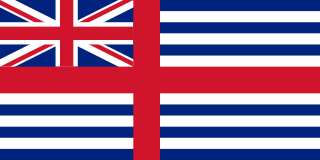
Van Diemen's Land was the colonial name of the island of Tasmania used by the British during the European exploration and colonisation of Australia in the 19th century. The island was previously discovered and named by the Dutch in 1642. Explorer Abel Tasman discovered the island, working under the sponsorship of Anthony van Diemen, the Governor-General of the Dutch East Indies. The British retained the name when they established a settlement in 1803 before it became a separate colony in 1825. Its penal colonies became notorious destinations for the transportation of convicts due to the harsh environment, isolation and reputation for being inescapable.
The history of Tasmania begins at the end of the Last Glacial Period when it is believed that the island was joined to the Australian mainland. Little is known of the human history of the island until the British colonisation of Tasmania in the 19th century.

Risdon Cove is a cove located on the east bank of the Derwent River, approximately 7 kilometres (4 mi) north of Hobart, Tasmania. It was the site of the first British settlement in Van Diemen's Land, now Tasmania, the island state of Australia. The cove was named by John Hayes, who mapped the river in the ship Duke of Clarence in 1794, after his second officer William Bellamy Risdon.
Richmond is a town in Tasmania about 25 km north-east of Hobart, in the Coal River region, between the Midland Highway and Tasman Highway. At the 2006 census, Richmond had a population of 880.

George Town is a large town in north-east Tasmania, on the eastern bank of the mouth of the Tamar River. The Australian Bureau of Statistics records the George Town Municipal Area had a population of 6,764 as of 30 June 2016.
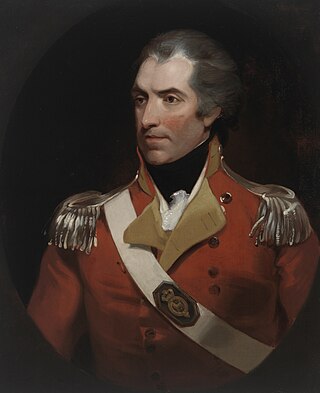
Colonel William Paterson, FRS was a Scottish soldier, explorer, Lieutenant Governor and botanist best known for leading early settlement at Port Dalrymple in Tasmania. In 1795, Paterson gave an order that resulted in the massacre of a number of men, women and children, members of the Bediagal tribe.
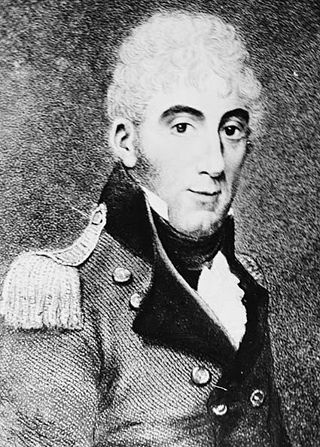
Colonel David Collins was a British Marine officer who was appointed as Judge-Advocate to the new colony being established in Botany Bay. He sailed with Governor Arthur Phillip on the First Fleet to establish a penal colony at what is now Sydney. He became secretary to the first couple of Governors, later being appointed to start a secondary colony where he founded the city of Hobart as the founding Lieutenant Governor of Van Diemen's Land.

The West Coast of Tasmania has a significant convict heritage. The use of the west coast as an outpost to house convicts in isolated penal settlements occurred in the eras 1822–33, and 1846–47.

His Majesty's Armed Survey Vessel Lady Nelson was commissioned in 1799 to survey the coast of Australia. At the time large parts of the Australian coast were unmapped and Britain had claimed only part of the continent. The British Government were concerned that, in the event of settlers of another European power becoming established in Australia, any future conflict in Europe would lead to a widening of the conflict into the southern hemisphere to the detriment of the trade that Britain sought to develop. It was against this background that Lady Nelson was chosen to survey and establish sovereignty over strategic parts of the continent.
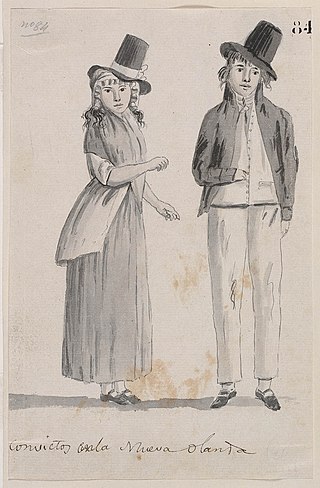
Between 1788 and 1868 the British penal system transported about 162,000 convicts from Great Britain and Ireland to various penal colonies in Australia.

William Sorell was a soldier and third Lieutenant-Governor of Van Diemen's Land.
The modern history of the Australian city of Hobart in Tasmania dates to its foundation as a British colony in 1804. Prior to British settlement, the area had been occupied definitively for at least 8,000 years, and possibly for as long as 35,000 years, by the semi-nomadic Mouheneener tribe, a sub-group of the Nuenonne, or South-East tribe. The descendants of theses indigenous Tasmanians now refer to themselves as 'Palawa'. Little is known about the region from prehistoric times. As with many other Australia cities, urbanisation has destroyed much of the archaeological evidence of indigenous occupation, although aboriginal middens are often still present in coastal areas.
The following lists events that happened during 1803 in Australia.
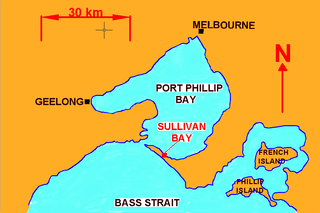
Sullivan Bay lies 60 km (37 mi) due south of Melbourne on Port Phillip, one kilometre (0.6 mi) east of Sorrento, Victoria. It was established as a short-lived convict settlement in 1803 by Lieutenant-Colonel David Collins, who named the bay after the Under-Secretary of State for War and the Colonies, John Sullivan.

Rear-Admiral John Bowen was an English Royal Navy officer and colonial administrator, who led the first settlement of Tasmania at Risdon Cove.
The Lieutenant Governor's Court was a court established in the early 19th century in the colony of Van Diemen's Land which subsequently became Tasmania, a state of Australia. The court had jurisdiction to deal with civil disputes where the amount in dispute was not more than £50 sterling in the colony. The establishment of the court was the first practical civil court in the settlement. This was an important first step in improving the resolution of civil disputes in the settlement. The Supreme Court of Van Diemen's Land eventually replaced it in 1823 when the court's charter was revoked by the Third Charter of Justice.
General Sir Charles Menzies, was a senior Royal Marines officer. Although he became a respected soldier, fighting with Horatio Nelson in the Napoleonic Wars and later rising to the rank of general before becoming aide de camp to Queen Victoria, Menzies is best remembered for the founding of Newcastle, New South Wales and the successful commencement of its settlement between the age of 21 and 22.
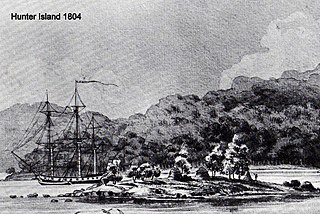
Ocean was an English merchant ship and whaler built in 1794 at South Shields, England. She performed two voyages as an "extra" ship for the British East India Company (EIC) and later, in 1803, she accompanied HMS Calcutta to Port Phillip. The vessels supported the establishment of a settlement under the leadership of Lt Col David Collins. Calcutta transported convicts, with Ocean serving to transport supplies. When the settlers abandoned Port Phillip, Ocean, in two journeys, relocated the settlers, convicts and marines to the River Derwent in 1804.
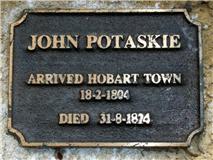
Joseph Potaski, or John Potaskie, was the first Pole to settle in Australia, and one of the first convicts to arrive in Van Diemen's Land on Ocean. Joseph Potaski worked hard to establish himself as a successful farmer in colonial Hobart. This was, however, undone by the exploits of his family. Joseph Potaski reflects the attitudes of those convicts who never progressed beyond their criminal past. Potaski is seen as representing the auspicious beginning of the Polish community in Australia.
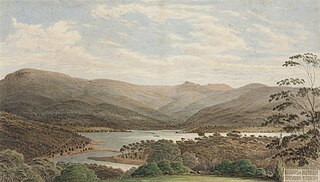
On 3 May 1804, a number of Aboriginal Tasmanians were killed by guards of the fledgling British settlement at Risdon Cove, Van Diemen's Land. The events occurred in mysterious circumstances, perhaps as the result of a misunderstanding. Conflicting eyewitness evidence indicated that either three Aboriginals were killed or "a great many were slaughtered and wounded" when a large group came upon the 75–80 colonists there.